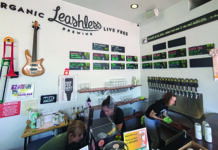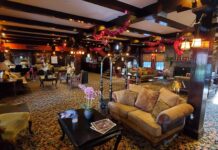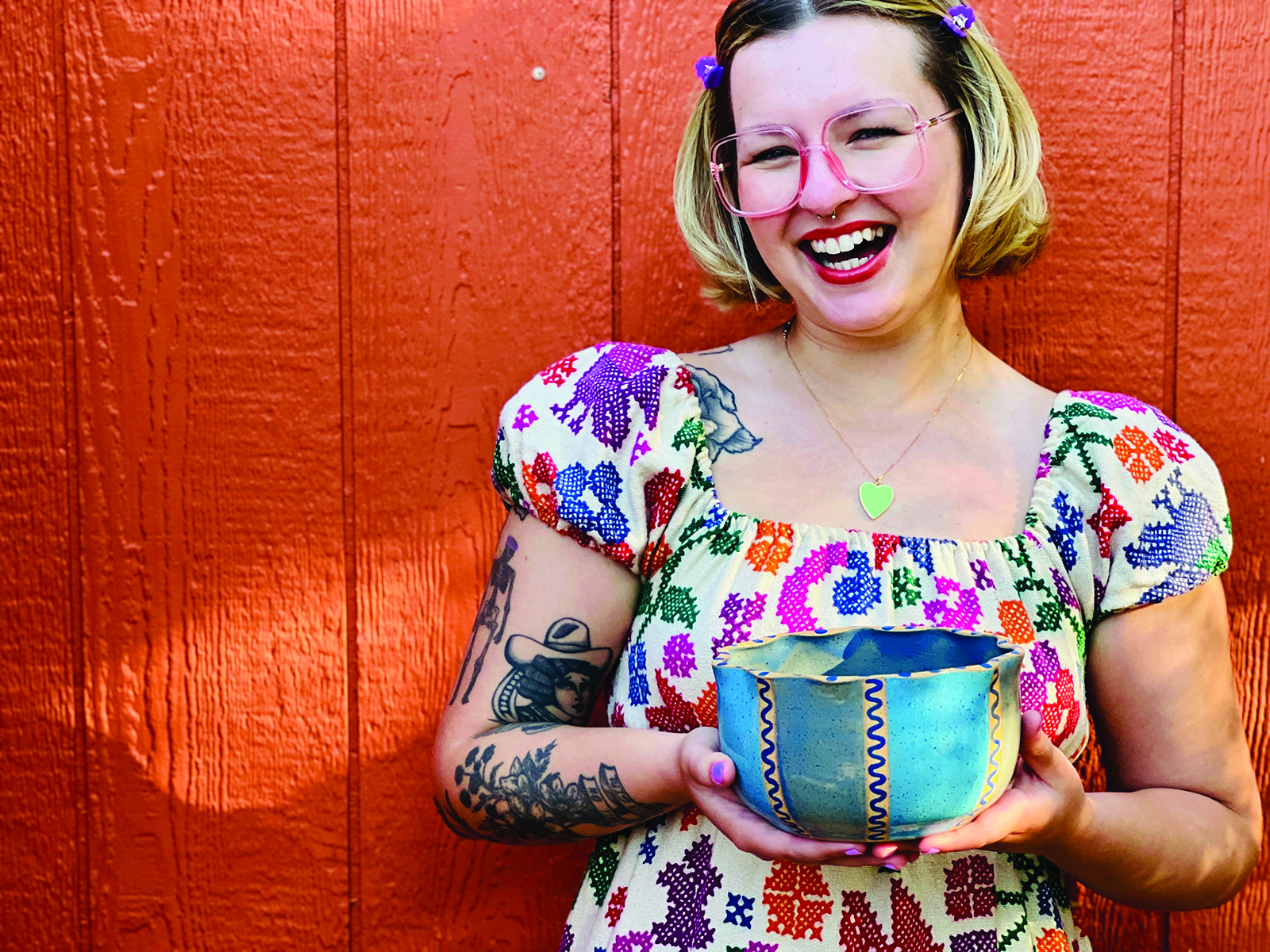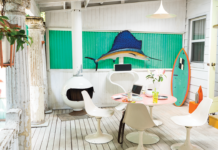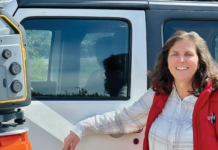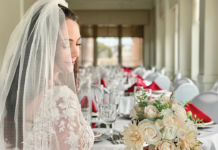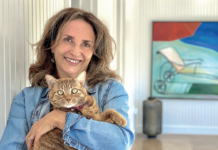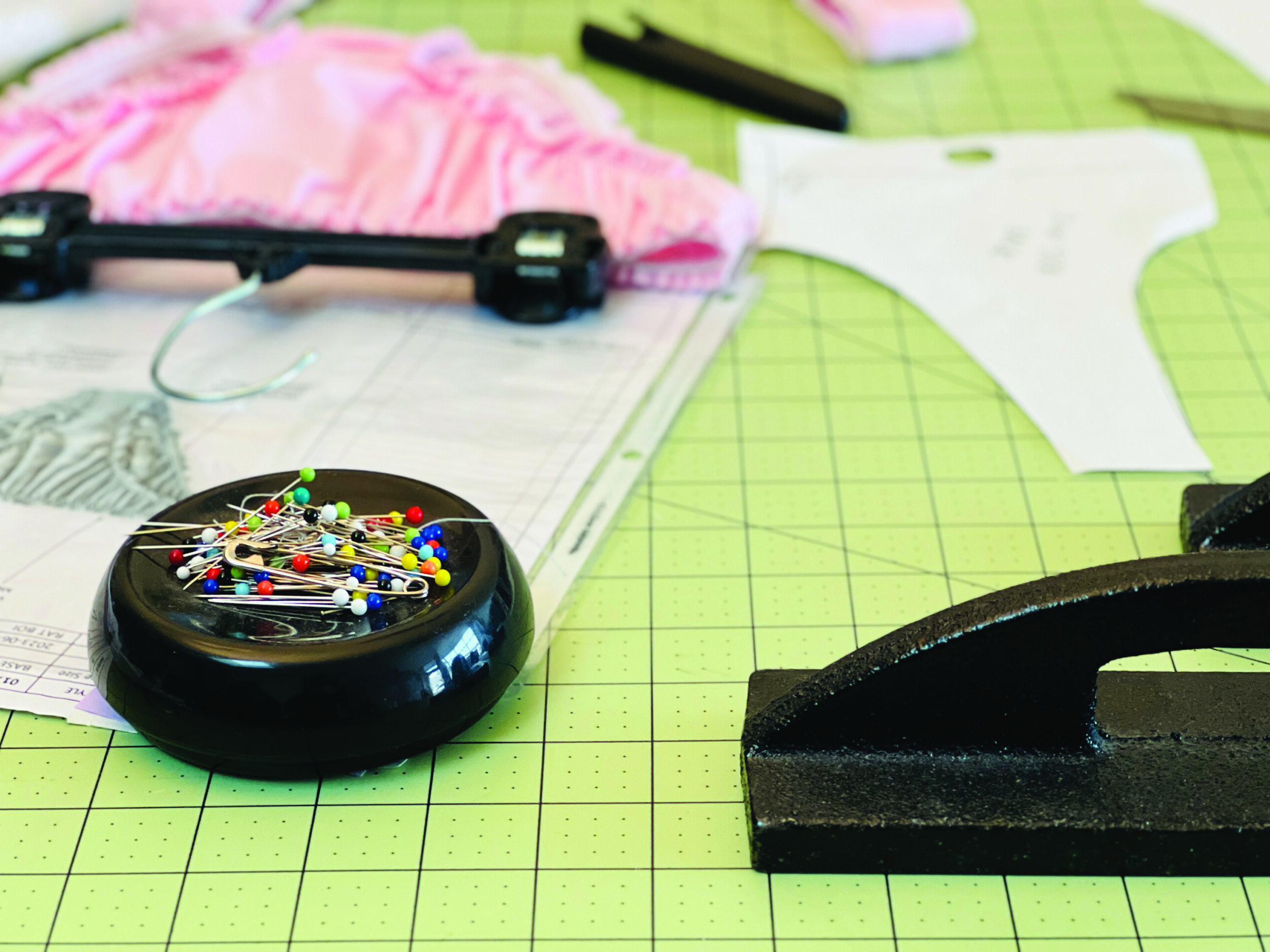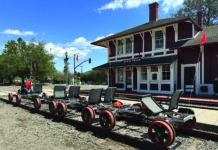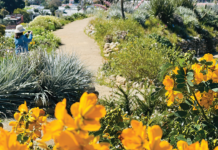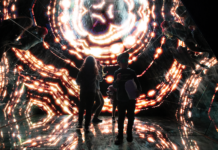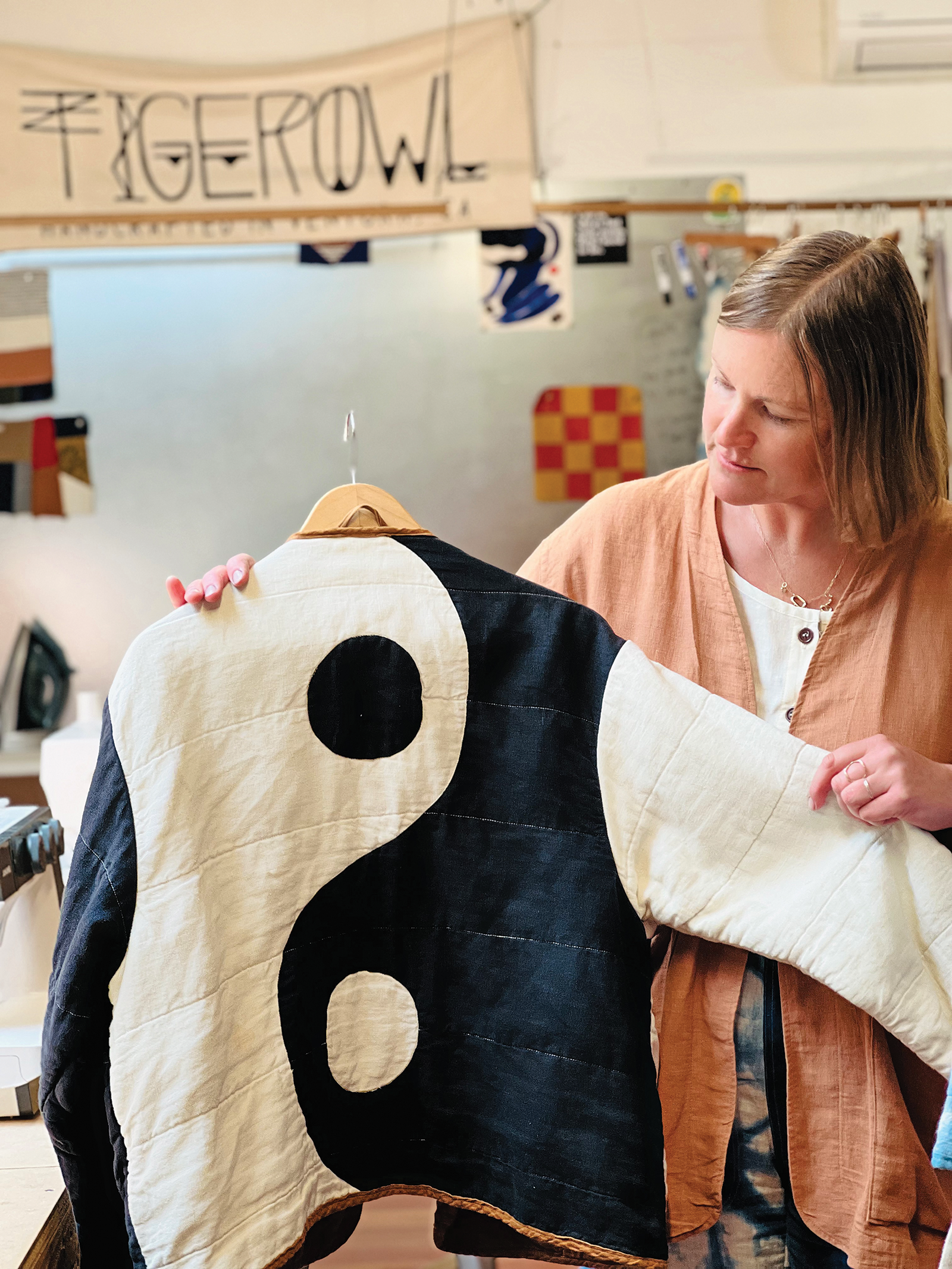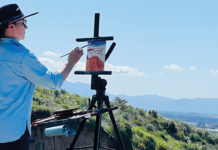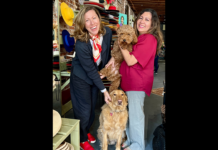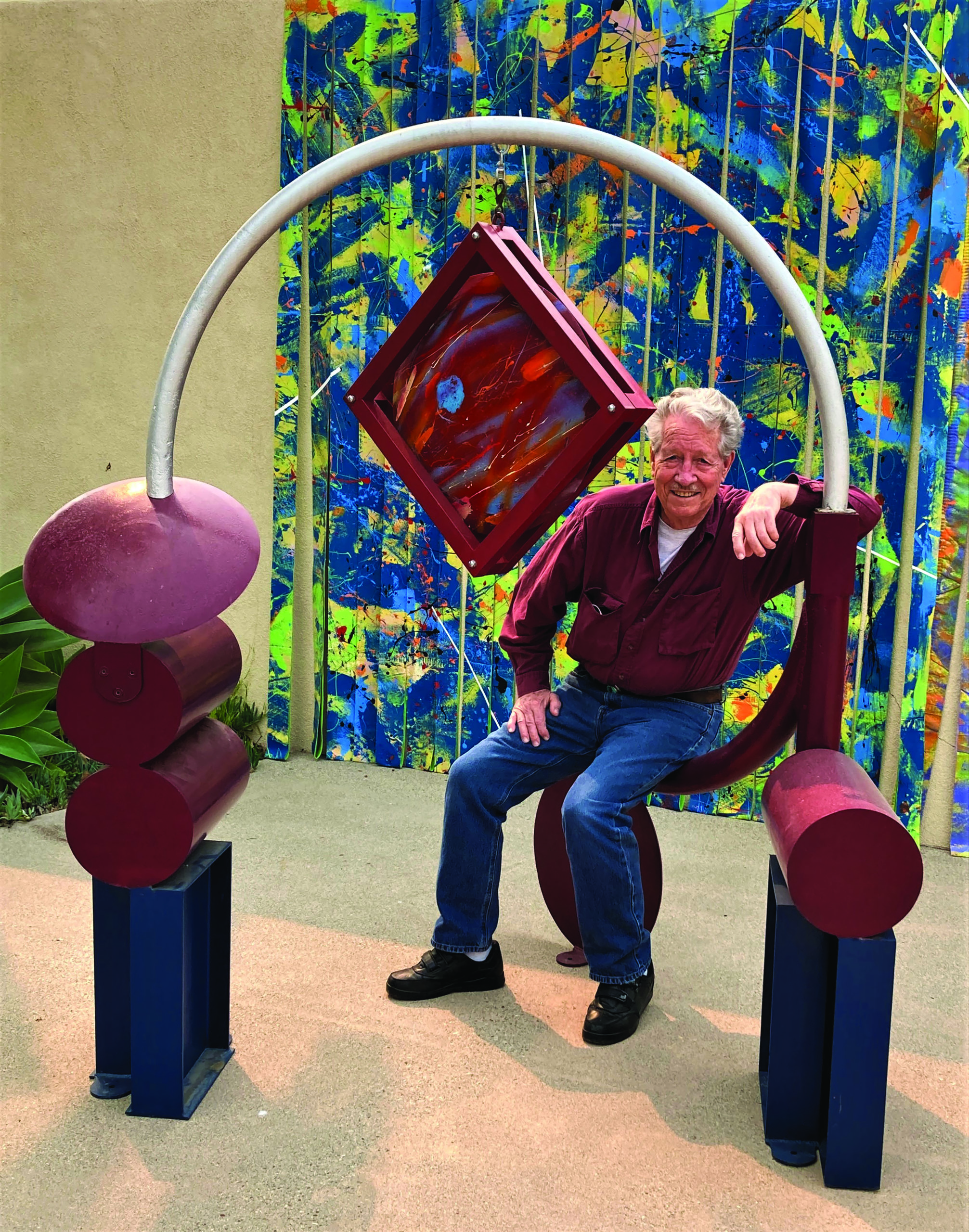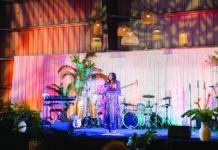by Emily Dodi
Bob Privitt is called many things: artist, mentor, local treasure, Coach Bob. Privitt’s collages, assemblages and sculptures have been featured in venues throughout Ventura County. He is Professor Emeritus at Pepperdine University, where his decades-long career included being a fine arts teacher, an artist in residence and director of the school’s art gallery. Pepperdine is also where he earned the nickname “Coach Bob”: He found that if his students called him coach instead of Professor Privitt, they were more likely to ask questions and be engaged. He has been lauded for his involvement in the local arts community and for being a strong supporter of fellow artists.
Ask Privitt to describe himself, however, and his answer may surprise you.
“I like to think of myself as an artist, but probably I’m only kind of a journeyman journalist interested in who, what, where, when and why. I spend a great deal of time [thinking], what is this object? Why is this object? What does it mean? Why is it here? So, I get all entangled in the cultural, social, symbolic meaning of things … I’m interested in the juxtaposition of disparate elements to create new meaning.”
Privitt doesn’t like to do the same thing over and over again. He admits to having a short attention span and an aversion to “churning out multiple artworks that look alike. If it doesn’t have meaning for me, I am not interested in doing it.”
His voice has a hint of a drawl. His cadence is slow and easy. His thoughts are deep, and even though he claims that there’s a healthy dose of “Scotch-Irish malarkey” in what he says, one suspects that everything he says about art and what it means to him is the gospel truth.
“I believe that everything has meaning. If you are a reasonably intelligent and a reasonably well-educated person, I think you have the duty and the desire to find out [what it is]. … Artists talk about being in the zone and being in the flow of things and to a certain extent that’s true,” Privitt says, but then he adds that he doesn’t quite work that way. “I think that God gave us a brain; why don’t we use it every now and then?”
So, whatever the object, his jumping off point is the same. It begins with the question: What does this mean? Imagine holding a seed in your hand. “You ask yourself what does the seed mean? Then you start thinking about the seed as a symbol for regeneration and new life. Or a quail egg that you got; it could potentially be a bird that could fly. You start getting involved in the thought process. What something is and how it goes through its lifetime and then finally ends up being what it is to me. That’s what happens whenever I create.”
A prolific artist, Privitt works with anything that catches his eye and sparks his imagination — from cheese graters, copper wire and glass bottles to asbestos covers, a croquet ball, even bird bones. “I think about all of the symbolic meanings of all of these things,” he says, then shrugs with a laugh, “I’m giving you a bucket of philosophy.”
Privitt’s favorite place to find materials is the thrift store. “I find this thing and that thing, and I’ll put it together and create something. The objects are the first step.” For instance, secondhand wooden letter trays and serving trays are the source of his “Messages Sent/Messages Received” series. “The starting point for each sculpture uses either a wooden letter tray (a device/vehicle for communication) or a wooden serving tray (a device/vehicle for providing sustenance),” Privitt writes in the commentary about the piece. When he spotted the trays, with their “beautiful wooden dovetail joints,” Privitt says that it got him thinking about “the symbolism and the history and the cultural aspect of that particular shape. That’s my foundation. I start with that and then whatever can fit inside, sometimes slightly outside, the tray becomes either the message sent or the message received.”
“Looking Back, Looking In,” another piece in the letter tray series, features a person’s profile in aluminum, looking backwards, and a cribbage game board that “points to aspects of rhythm, the randomness of chance …” The viewer is able to see their reflection in the aluminum face. “The very concept of seeing your own reflection,” Privitt marvels at the thought before paraphrasing a Bible verse. “Something about when we look in a mirror, we see imperfectly but later we will see clearly.”
Whatever the piece, large or small, assemblage, collage or sculpture, Privitt’s process is rooted in his training as an ironworker. (He still holds his union book from Local 775 in El Paso, Texas.) When he goes into his studio, Privitt explains, “I’ve already thought about what I’m going to do and, because I have enough technical and engineering skills from my experiences as an ironworker, I don’t have to worry about what’s going to happen or how to make it work right. … I already sat down and thought about it long ago … the artwork is already formed in my mind and then it’s just a matter of completing it.”
However, it doesn’t always go according to plan.
“Occasionally, there’ll be a case where I mess up on my sequence.” When that happens, Privitt says, it’s time to “fall back 40 yards and punt because now it’s starting in a new direction. That doesn’t happen very often, though.”
One of his most well-known pieces is a large metal sculpture, “Captured Semisphere,” currently on view at the Museum of Ventura County. Today, however, Privitt creates mostly small-scale collages and assemblages.
“I do miss working on the large sculptures,” he says, but the work involved is just too strenuous. Many of the individual pieces that went into his sculptures are massive, like farm machinery parts and the like. “I can’t haul that stuff around the way I used to … When I was younger and stronger and healthier, I could literally pick up the different parts and set them down. I’m 82 years old, what am I doing messing with that? … So, I started doing smaller things.”
Whether it’s a towering sculpture or an assemblage held in a cigar box, the spirit in which Privitt creates them is the same. “I like contradictions and conflicts. Contrasted things that [make you ask], wait a minute, what’s going on here? There seems to be a dynamic tension going on. I’ve often been asked, ‘Coach Bob, why did you do that?’ Because it amused me. What other reason need there be? I am interested in creating something that has not existed before, and that’s hard to do.”
Maybe so, but Coach Bob makes it look easy.



